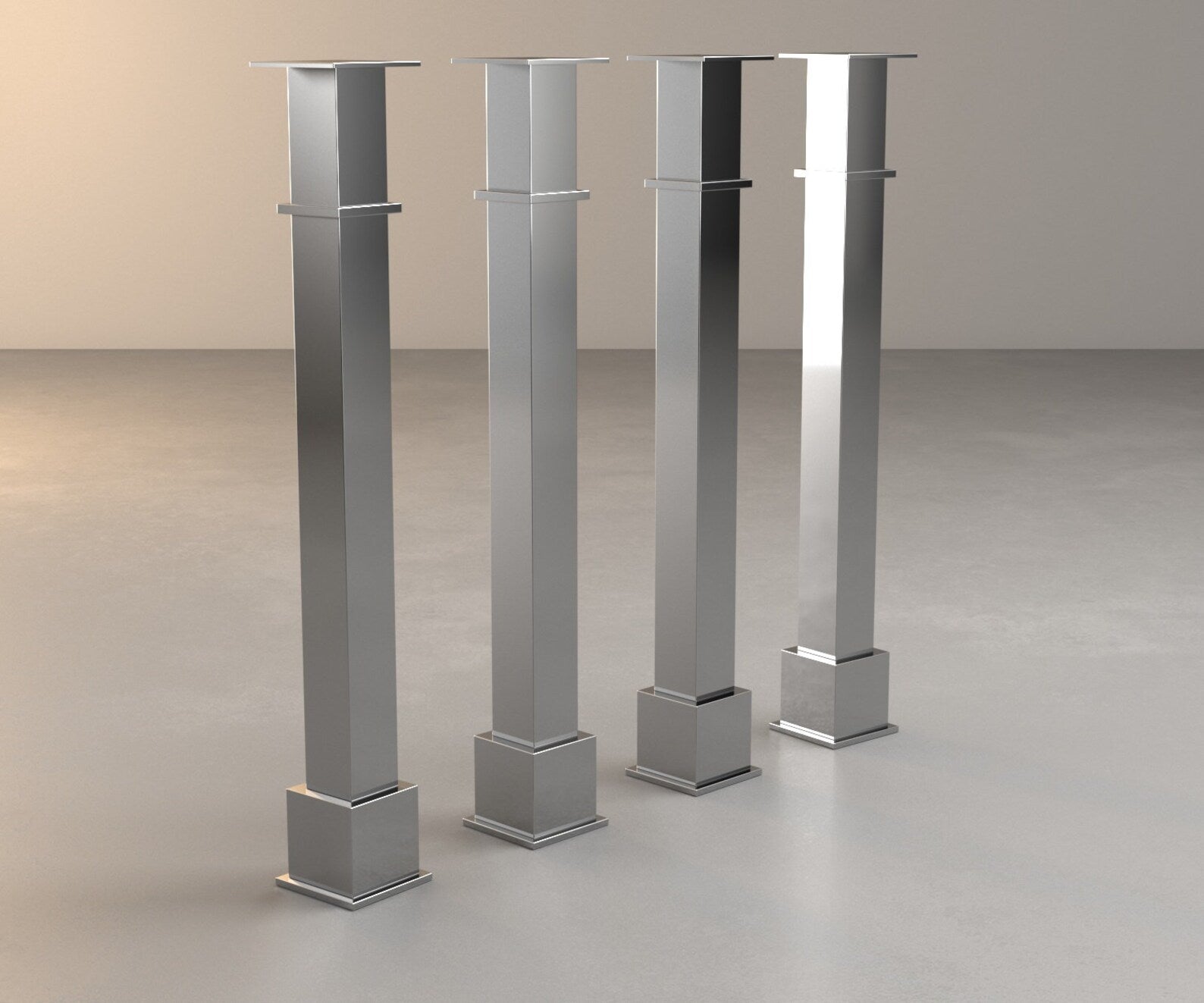Vital Aspects to Consider When Picking Legs For Kitchen Island
Choosing the appropriate legs for a kitchen area island involves a cautious analysis of multiple aspects that can significantly influence both capability and visual charm. As we check out these components, it becomes clear that each choice can have far-ranging implications for the general cooking area experience.
Product Options
When picking legs for a kitchen area island, recognizing the various material choices is crucial for achieving both aesthetic charm and architectural honesty (Legs For Kitchen Island). The choice of material substantially affects not just the durability of the island however likewise its general layout and capability
Steel legs, commonly made from stainless steel or wrought iron, contribute a modern and industrial feeling while making sure toughness and stability. These materials are immune to put on and can sustain considerable weight, making them perfect for larger islands.
An additional alternative is engineered materials, like MDF or plywood, which can be more cost-efficient while still using a variety of finishes. However, they might not supply the same degree of stability as solid timber or metal. Materials such as acrylic or glass can produce a contemporary appearance, though they may call for extra assistance to make sure stability.
Inevitably, the selection of product for kitchen island legs need to line up with the wanted performance and the overall style of the kitchen.
Design and Design

When taking into consideration design, the form and surface of the legs are important. Conical legs can supply a sense of lightness and beauty, while thicker, much more robust legs can convey toughness and security. Furthermore, the surface-- be it painted, stained, or all-natural-- need to enhance the cabinets and counter top materials to develop a unified appearance.
Additionally, the design of the legs can also mirror individual taste. Custom or attractive legs, such as those including elaborate carvings or one-of-a-kind geometric forms, can work as centerpieces, adding personality and character to the kitchen. Inevitably, the appropriate option will not just enhance capability however also boost the visual appeal, making the cooking area island a standout function of the home.
Elevation Factors To Consider
Picking the appropriate height for kitchen area island legs is vital, as it straight affects both capability and convenience. The typical elevation for a kitchen area island typically varies from 36 to 42 inches, straightening with common countertop elevations.

It is additionally necessary to represent customers' heights and preferences. Tailoring the height can ensure a comfy experience for all relative, making the cooking area island a more enjoyable and practical room.
Weight Assistance
Making sure ample weight support for cooking area island legs is crucial for both safety and capability. The kitchen island typically serves several purposes, consisting of cooking, eating, and additional storage, demanding a my response robust assistance structure. When choosing legs, it is critical to think about the general weight capability called for based on the island's planned usage and the materials that will be placed on it.
The selection of material for the legs plays a substantial duty in their weight-bearing capacities. Solid wood, metal, and heavy-duty composites typically give remarkable toughness contrasted to lighter products. Additionally, the design of the legs-- whether they are directly, tapered, or have a pedestal kind-- can affect their capacity to disperse weight efficiently across the structure.
Always speak with the manufacturer's specifications regarding load restrictions to make certain that the legs can maintain the designated weight without jeopardizing security. In summary, picking cooking area island legs with appropriate weight support is necessary for developing a secure and practical cooking area.
Installation and Upkeep
Correct setup and maintenance of cooking area island legs are important for making sure longevity and security. To begin, it is necessary to adhere to the maker's guidelines throughout setup. This frequently entails securing the legs to the space station utilizing appropriate bolts, guaranteeing that the legs are degree and lined up. Making use of a level device can assist prevent tottering and enhance the general aesthetic charm of the kitchen island.
Once set up, normal maintenance is needed to maintain the integrity and look of the legs - Legs For Kitchen Island. For wood legs, periodic cleaning with a wet towel and application of suitable timber gloss can prevent wetness damages and keep their finish. Metal legs might call check it out for a gentle cleaning service to get rid of oil and grime, complied with by a completely dry towel to stop rust formation
Furthermore, examine the legs consistently for indicators of wear or damages, such as splits or loosened joints. Tightening up screws or screws as required can additionally lengthen the life-span of the legs. By sticking to these setup and upkeep methods, house owners can make sure that their kitchen area island continues to be sturdy and aesthetically appealing for several years ahead.
Final Thought

Aesthetic coherence is vital in choosing the design and layout of legs for a cooking area island, as these aspects significantly influence the general atmosphere of the area. Tapered legs can supply a sense of lightness and sophistication, while thicker, a lot more durable legs can communicate stamina and stability.Choosing the proper height for kitchen area island legs is important, as it straight affects both performance and comfort. In summary, selecting kitchen island legs with adequate weight assistance is crucial for developing a practical and risk-free culinary space.
In verdict, picking legs for a kitchen area island requires careful consideration of numerous aspects, including material alternatives, design, height, weight support, and installment.
Comments on “Ingenious and Stylish Styles in Modern Legs For Kitchen Island Solutions”